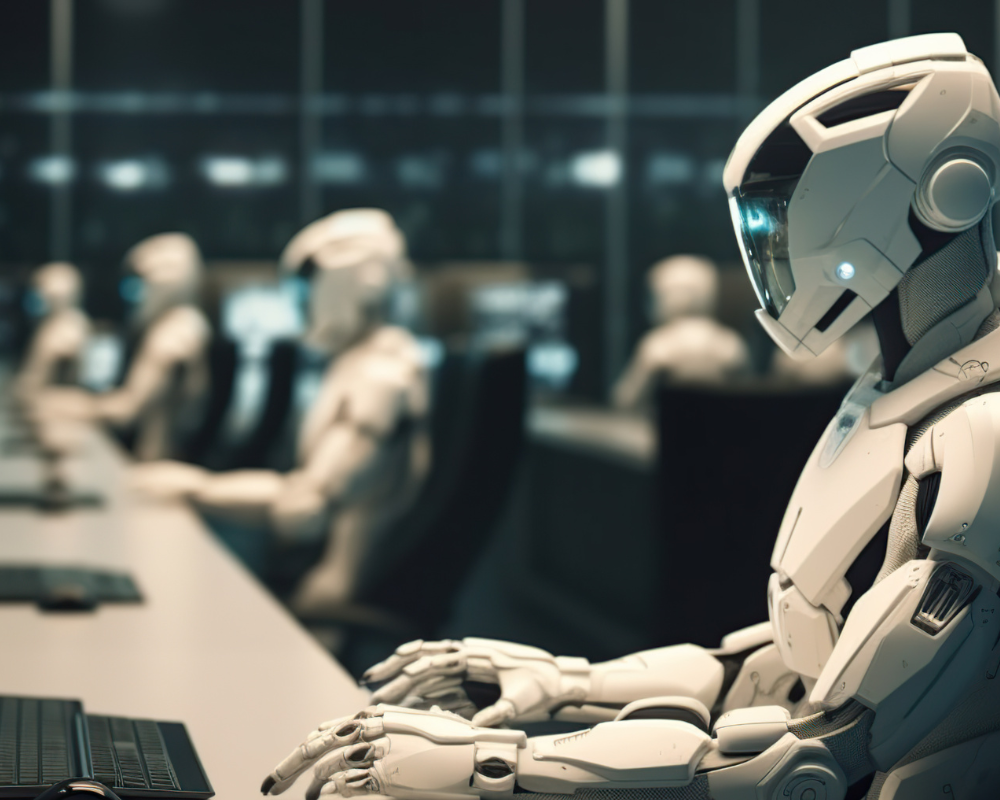July 18, 2025 By: JK Tech
The internet is flooded with articles about AI agents; the employees of the future who are ready to, automate workflows, equipped with real-time data for analysis and decision-making and UiPath’s CTO just offered a fascinating glimpse into what this digital workspace where three distinct contributors—humans, software robots, and AI agents—coexist in the same workflow, each focusing on tasks best suited to their strengths.
The new “office layout” includes three types of workers, robots, AI agents and humans to oversee, create, and handle truly complex or sensitive stuff.
Dividing the Work: Robots for Rules, AI for Reasoning
- Software Robots: The reliable taskmasters
Think of these as the ultra-efficient teammates who never get tired. They’re perfect for deterministic tasks, that is, work that follows a clear set of rules and doesn’t change like pulling data from spreadsheets, transferring files between systems or filling out standard forms. - AI Agents: The adaptable problem-solvers
AI agents are more flexible. They step in when a task involves non-deterministic elements that require context, judgment, or language understanding. For instances such as answering customer emails, summarizing long documents or categorizing support tickets based on tone and content.
What’s actually happening?
The AI agents are context-grounded, meaning the AI system’s responses or actions are anchored in relevant, real-world context, so it understands and reacts based on accurate, meaningful information. Imagine a customer asking a virtual assistant:
“What’s the status of my order?” Without context grounding, the assistant might give a generic reply like, “You can check your order status on our website.”
With context grounding, the assistant knows who the user is, that they ordered a phone yesterday, their delivery address, the current shipping status, etc.
So it replies, “Your iPhone 13, ordered yesterday, is currently in transit and will arrive tomorrow at your Jaipur address.”
Context grounding is crucial to avoid hallucinations and to ensure that the AI uses the latest and most accurate data, follows company-specific rules and makes decisions relevant to the environment it operates in
What Makes This Possible?
UiPath isn’t just throwing AI into the mix randomly. They’re doing it with structure and intention, supported by:
✅ Scoring Models – These assess whether a process is ready for automation or agent support. It’s like checking a car before a road trip, are all systems good to go?
✅ Governance Frameworks – These define how and when automation should happen. Think of it as the rulebook that keeps everything safe, compliant, and aligned with business goals.
Together, these tools ensure organizations can scale automation confidently without sacrificing control.
Where Can These Agents Be Built?
AI agents often work on top of or alongside RPA platforms, giving structure to their actions and plugging them into real workflows. Here are some of the key platforms enabling agent development and deployment:
Robotic Process Automation (RPA) Platforms
These platforms provide the backbone for structured workflows, and now increasingly include support for AI-driven agents:
- UiPath – Its platform combines classic RPA bots with AI agents through tools like Autopilot and AI Center, allowing for both rule-based execution and intelligent task handling.
- Automation Anywhere – Offers IQ Bot and Automation Co-Pilot, bridging structured automation with AI capabilities for front-office use.
- Blue Prism – Known for secure, scalable automation; recently expanding into intelligent automation using AI and cloud integrations.
These tools are ideal when you need a combination of deterministic (robotic) and adaptive (agent) work in one seamless process.
Agent-Specific & AI-Native Platforms
In addition to RPA, dedicated platforms are emerging for building more flexible, autonomous agents:
- Microsoft Copilot Studio – For creating task-based agents across Office apps and enterprise tools.
- OpenAI GPTs (Custom GPTs) – Easy to deploy, lightweight AI agents for specific functions (e.g., summarizing, responding, analyzing).
- LangChain + vector databases (e.g., Pinecone, Weaviate) – Gives developers full control to build agents that retrieve, reason, and act using real-time context.
- Google Vertex AI Agents – For enterprise-grade agent orchestration with access to Google’s model ecosystem.
What This Means in Practice
Across teams, whether in marketing, finance, operations, or IT, this new model opens ways to work smarter. Repetitive tasks will be handled in the background, freeing space for focus and creativity. Insights from large datasets or documents arrive faster, and AI tools become genuine collaborators that understand the flow of work. Processes become smoother, with fewer interruptions and less need for micromanagement, making work feel a little more seamless and a lot more productive.



